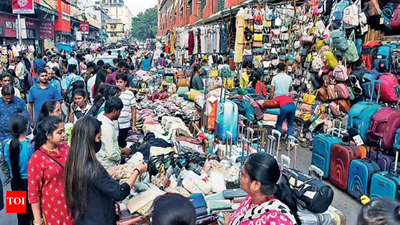ARTICLE AD BOX

Contradictory US tariff signals force Bengal exporters to look at new markets
KOLKATA: Bengal's garm-ents, leather and prawn exporters, who depended on America for much of their income, have started looking for other markets after being blindsided by contradictory tariff signals from US courtrooms and office of the US president.Hit by a punishing 50% US tariff, which will drastically cut demand for Indian goods in America, Bengal's garments exporters are shifting their focus to South Africa, Gulf markets such as Dubai and a few other countries, while leather exporters are aggressively exploring opportunities in the UK and Australia.Prawn exporters, who earned 75% of their income from consignments shipped to the US, are trying to exp-and their trade with Japan, China and the UAE.
Exporters have got a much-needed helping hand from logistics service providers, who have reduced their margins to cushion the tariff blow on their partners-in-trade and buy them some time to explore ties with non-US markets.Arun Kumar, president of Association of Multimodal Transport Operators of India, told TOI: "Like the pandemic, we are taking the US tariff issue as a challenge as export orders from the US are getting cancelled or being put on hold.
To help exporters find alternative markets, logistics service providers in the state have agreed to work with lower profit margins."Adding to the exporters' worry over mounting losses are conflicting signals from the US, with a federal appeals court declaring the tariff hike illegal and the White House standing firm on the increased levy.

Exporters explore UK, Australia markets Yogesh Gupta, regional chairman (east), Federation of Indian Export Organisations, described the new US tariff regime as "an eye opener" as it has underscored the need to have a mix of customers from different geographical locations to hedge against losses in any one market.
"There will be a lot of re-alignment and re-calibration of buyers and their countries. Global trade dynamics will re-align..." he said. Nari Kalwani, CMD of Asian Leather Pvt Ltd and chairman (eastern region) of Indo-German Chamber of Commerce, said, "We are exploring alternative markets like the UK and Australia. We have FTAs with these two countries." The leather lobby, Kalwani said, is also trying to increase exports to Russia, South America and East Asian nations.
"We are also focusing on EU, with which India is likely to have an FTA by year end." In Metiabruz, one of the largest garment clusters in the city, manufacturers are betting big on the Gulf. Sarfaraz Hossian, a manufacturer said, "The garments we make mostly contain polyester. The demand from European countries is mostly for cotton garments. Dubai and South Africa have no issue with polyester-based garments." Garment exporters can also cash in on FTAs with a host of countries, said Sanjay Jain, chairman of the Indian Chamber of Commerce's national textile committee and managing director of TT Ltd, a garment manufacturing company.
"We have FTAs with Australia, Japan and Korea. The UK FTA in garments is in the works. Once operational, it can fetch us an additional $1 billion," he said. Of Bengal's Rs 8,000-crore frozen prawn export market, 20% comes from the Gulf and China and Japan. The rest come from the US. Rajarshi Banerjee, president, Seafood Exporters Association of India, said, "It is time to raise the volume of consignments to countries other than the US."



.png)
.png)
.png)
















 3 hours ago
6
3 hours ago
6







 English (US) ·
English (US) ·